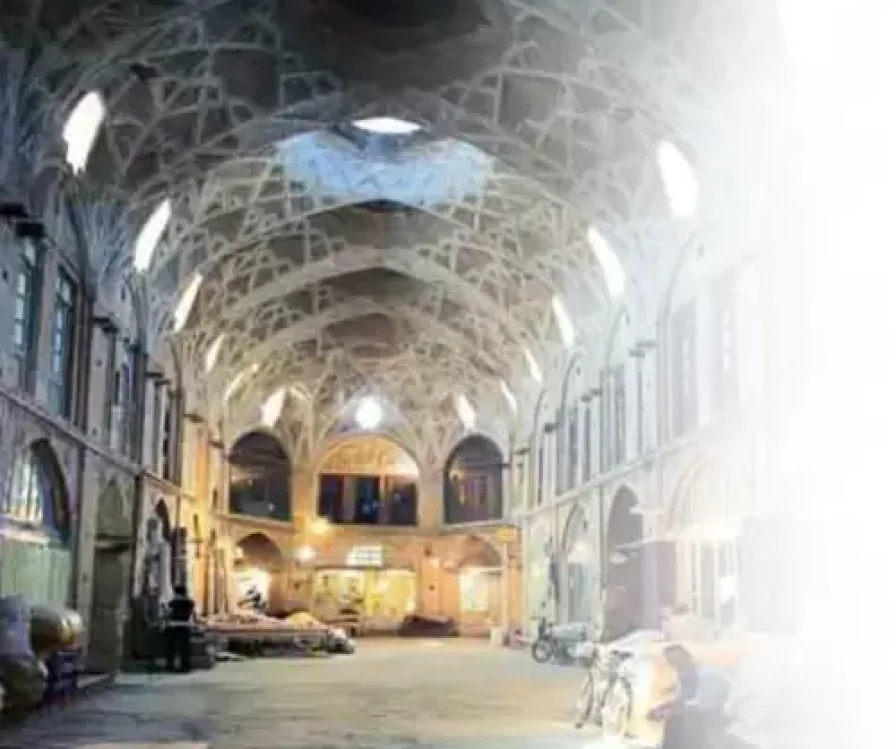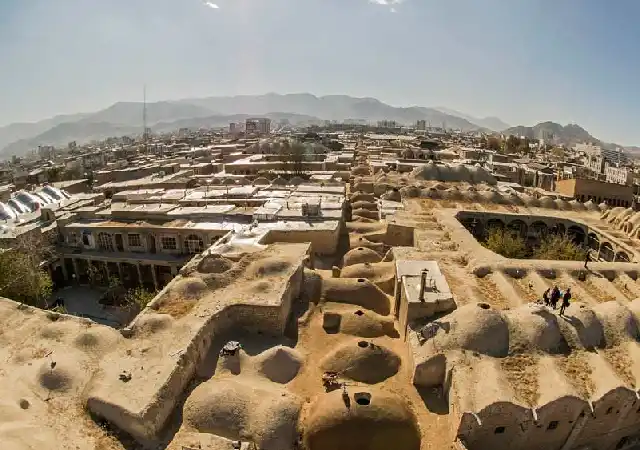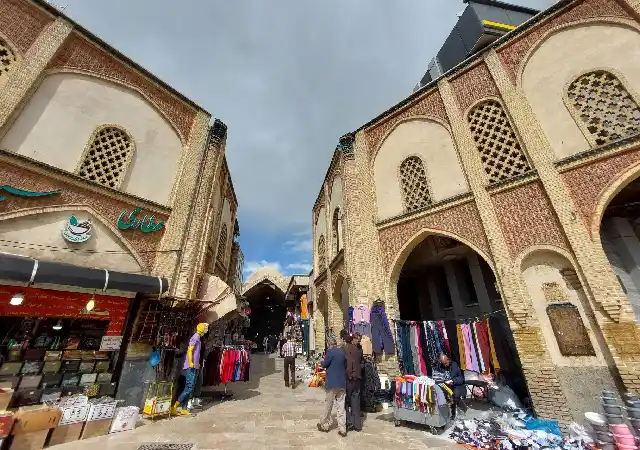
Arak Bazaar , A vibrant bazaar showcasing the heart of Arak





Arak Bazaar
In traditional cities of Iran, the bazaar is considered the beating economic heart of the city. It effectively connects producers and consumers. Imagine if today the bazaars of Tehran, Isfahan, or Tabriz were to close. What would happen? How would people obtain their basic necessities? How would producers secure their raw materials? The answer is clear: the economy would come to a halt. In the Middle East and Iran, the better the economic conditions of a city, the larger, more specialized, and better its bazaar will be.
The Arak Bazaar is one of the oldest structures in the city of Arak. This grand bazaar complex includes baths, mosques, schools, water reservoirs, alleys, and caravanserais, established during the reign of Fath Ali Shah Qajar by Youssef Khan Gorji in 1228 AH in the central area of Sultanabad (the old name of Arak). The bazaar is centered around a four-way intersection, connecting two north-south and east-west routes that lead to the old city gates, making it a strategically significant point in the city in ancient times.
The history of the Arak Bazaar, or Sultanabad, is intertwined with the history of the city itself. Due to improved economic conditions in ancient Arak, along with the growth of agriculture and the production of Sarough carpets—once considered among the best in Iran—there was a pressing need for a large and well-structured bazaar around the early 13th century AD. It is evident that the construction of the modern and well-planned bazaar of ancient Arak or Sultanabad, based on geometric parallel lines and sound architectural principles, took at least twenty years. Fortunately, since the city and bazaar were designed and built simultaneously according to precise architectural principles and the fundamental needs of the city, there are no signs of chaos, curves, or other design issues found in bazaars of other cities. The bazaar consists of two lines extending north-south and east-west, intersecting at the four-way intersection. This geometric balance has allowed for the prediction of exits as escape routes during earthquakes and fires, making the Arak Bazaar a modern and advanced marketplace, complete with secondary chambers and two-story buildings for accommodating merchants during their business travels.
The bazaar features two perpendicular axes: one running north-south, 720 meters long, with entrances at both the north and south, and the other running east-west, 200 meters long, with eight entrances. The secondary alleys are constructed perpendicular to the two main passages. Due to adherence to architectural principles, the bazaar has been designed for proper air circulation and ventilation, providing a warm and pleasant atmosphere in winter and a cool and bearable environment during the hot summers of the central province. As mentioned, the north-south and east-west axes intersect at a place called the four-way intersection, which also features a stone pool that creates a beautiful and pleasant space. The entire bazaar covers an area of approximately 14 hectares, and in ancient times, there were four gates surrounding it: the Qibla Gate, the Rahzan Gate, the City Gate, and the Hajj Ali Naqi Gate. Unfortunately, all four gates have been lost over time.
This modern Qajar art has been well-preserved, primarily using brick, plaster, mortar, and clay in its construction. To enhance stability, copper and iron plates have been used for the columns, and wooden beams have been incorporated in some sections for additional support. The bazaar's roof is essentially dome-shaped, with smaller domes visible along the north-south and east-west axes. At the intersection of these two axes lies the central dome, which is larger than the others and forms the roof of the four-way intersection. In the center of each dome, a polygonal opening has been created, allowing for light and facilitating airflow and ventilation between the interior and exterior of the bazaar. This ventilation system ensures that the air inside the bazaar remains warm in winter and cool and pleasant in summer.
As previously mentioned, this bazaar was constructed based on modern architectural and geometric principles. Therefore, it consists of two longitudinal axes—north-south and east-west—that converge at the four-way intersection, where a large and spacious dome is located. This longitudinal structure is designed to provide ample opportunity and space for merchants and people to escape in case of fires or other unforeseen events, making this feature truly remarkable and unique.
Hundreds of shops line the bazaar, along with numerous chambers and sarais surrounding the main thoroughfare. Many of these shops have two stories, with the upper level used for the temporary accommodation of merchants and visitors. This feature addresses the accommodation needs of these individuals in the absence of modern hotels and lodgings.
The Arak Bazaar originally had four bathhouses, some of which have been repurposed over time. Notable bathhouses include the Four-Way Bathhouse, the New Bathhouse, the Sheikh Al-Islam Bathhouse, and the Firouzeh Bathhouse. The Aqa Ziaoddin seminary is located within the bazaar, welcoming students and religious learners. At the site of the Four Seasons Bathhouse, a museum has been established that houses many national artifacts. In addition to its economic and social functions, the Arak Bazaar has also played a political role. During the Constitutional Revolution, many constitutionalists emerged from this bazaar, and merchants played a significant role in the success and victory of the constitutionalists through general strikes and focused uprisings. If you plan to travel to the Central Province and Arak, be sure to visit the Arak Bazaar, this architectural masterpiece of the Qajar era, and enjoy its interior space. Tasting the kebabs of the bazaar is another tourist attraction. It’s worth spending some time exploring the bazaar and picking up souvenirs for your loved ones. Rest assured, this bazaar is so vast that it can cater to the tastes of every passerby. We look forward to seeing you in Iran, Central Province, the city of Arak, and the beautiful Arak Bazaar—soon, and not in the distant future. Here’s to that day!
Contact Us
+989054577261